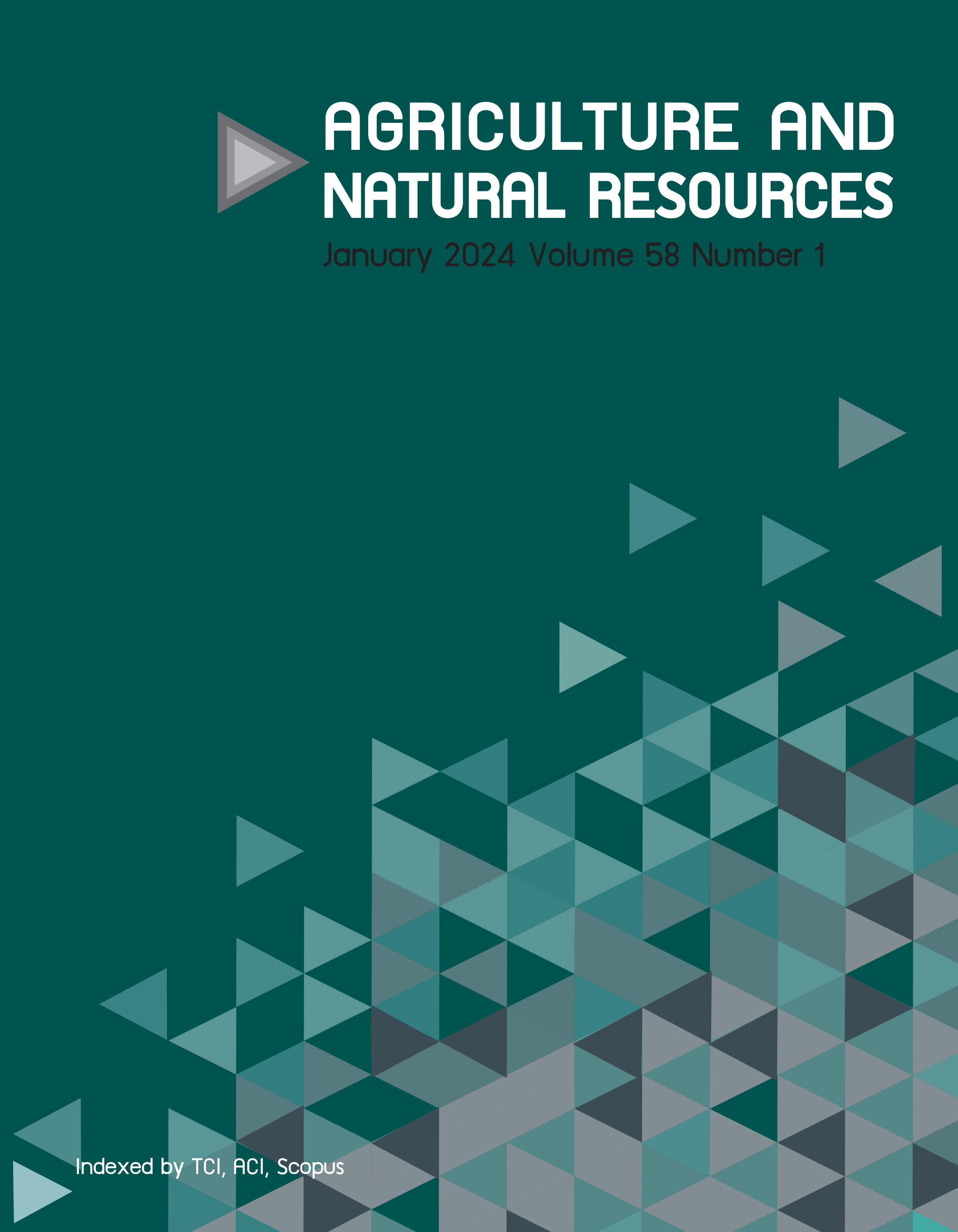Pathogenicity and molecular phylogenetic analysis reveal Colletotrichum siamense as causal agent of leaf fall disease in rubber trees (Hevea brasiliensis) in southern Thailand
Keywords:
Colletotrichum gloeosporioides species complex, Koch’s postulates, Morphology, Polyphasic approachAbstract
Importance of the work: Leaf fall disease of rubber trees (Hevea brasiliensis) has devastated rubber production in southern Thailand.
Objectives: To identify and characterize the pathogen responsible for leaf fall disease in rubber trees and to test the pathogenicity of the isolated pathogens in accordance with Koch’s postulates.
Materials & Methods: Leaf sampling was carried out in all 13 districts of Narathiwat province, southern Thailand. Fungal isolation was performed using a tissue transplanting technique. The obtained isolates were tested for their pathogenicity that was determined using Kochs’ postulates through the detached leaf technique. The causal agent was identified based on morphological and molecular evidence.
Results: In total, 160 isolates were obtained from all sampling locations. The pathogenicity tests using detached leaves demonstrated that all isolates showed the leaf spot, with three isolates (2CHI12, 1SP12-1 and 4MU33-1) producing the most severe symptoms. These three causal agents were identified as Colletotichum siamense 2CHI12, 1SP12-1 and 4MU33-1, based on morphological and molecular evidence. The species of the causal agent was identified using the internal transcribed spacer (ITS) region, glyceraldehyde-3-phosphate dehydrogenase (GAPDH), actin (ACT), chitin synthase (CHS-1), beta-tubulin 2 (TUB2) and the Apn2-Mat1-2 intergenic spacer region, as well as the partial mating type (Mat1-2) (ApMat) genes that were amplified based on polymerase chain reaction using the primer pairs ITS1/ITS4, GDF1/GDR1, ACT-512F/ACT-783R, CHS-79F/CHS-345R, Bt2a/Bt2b, and AM-F/AM-R, respectively.
Main finding: The morphological and phylogenetic analysis confirmed that the causal agent of leaf fall disease was Colletotichum siamense.
Downloads
Published
How to Cite
Issue
Section
License
Copyright (c) 2024 Kasetsart Universityonline 2452-316X print 2468-1458/Copyright © 2022. This is an open access article under the CC BY-NC-ND license (http://creativecommons.org/licenses/by-nc-nd/4.0/),
production and hosting by Kasetsart University of Research and Development Institute on behalf of Kasetsart University.





